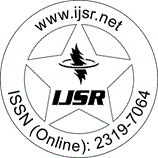Downloads: 2
India | Radiology and Medical Imaging Sciences | Volume 14 Issue 11, November 2025 | Pages: 35 - 44
Significance of MRI Defecography in the Evaluation of Pelvic Floor Abnormalities
Abstract: Objective: To evaluate the significance of MRI defecography in detecting and characterizing pelvic floor abnormalities. Methods: An ambispective study was conducted on 20 patients (10 males, 10 females) presenting with symptoms suggestive of pelvic floor dysfunction. All patients underwent MRI defecography. Patient demographics, clinical presentations, and MRI findings were analyzed. Results: The study population ranged from 20 to over 60 years old, with 75% of patients above 40 years. Constipation (85%), incomplete evacuation (65%), and chronic pain (50%) were the most common presenting complaints. MRI defecography revealed rectal prolapse as the predominant abnormality (85% of patients), followed by rectocele (25%), cystocele (15%), and other pelvic organ prolapses. 45% of patients had Grade 2 rectal prolapse. Multiparity (45%) and history of pelvic surgery (30%) were identified as potential risk factors. No statistically significant associations were found between pelvic abnormalities and age, BMI, or risk factors. Conclusion: MRI defecography proved to be a valuable tool in comprehensively evaluating pelvic floor abnormalities, particularly in detecting and grading rectal prolapse and other pelvic organ prolapses. This imaging technique provides detailed information that can aid in accurate diagnosis and treatment planning for patients with pelvic floor dysfunction.
Keywords: MRI defecography, pelvic floor abnormalities, rectal prolapse, pelvic organ prolapse
How to Cite?: Dr. Sneha Bhaskar, Dr. Sanjay Pasoria, "Significance of MRI Defecography in the Evaluation of Pelvic Floor Abnormalities", Volume 14 Issue 11, November 2025, International Journal of Science and Research (IJSR), Pages: 35-44, https://www.ijsr.net/getabstract.php?paperid=SR251031101844, DOI: https://dx.doi.org/10.21275/SR251031101844
